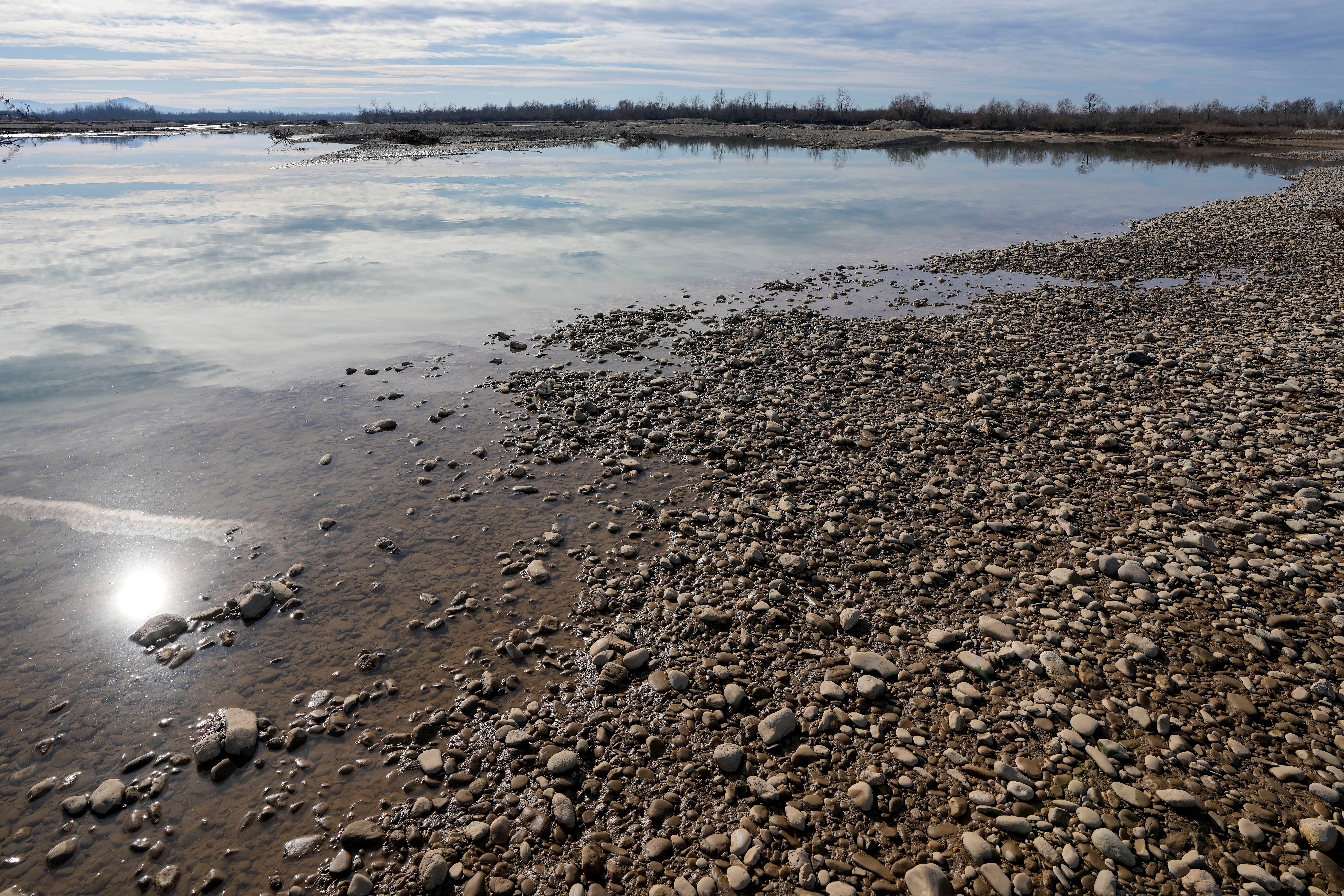BIJELJINA, Bosnia-Herzegovina (AP) — In cities along a section of the Drina River, which forms a natural border between Bosnia and Serbia, there are simple, durable gravestones marking the final resting places of dozens of migrants who drowned in recent years trying to reach Western Europe.
Their often decomposing bodies were retrieved from the Bosnian side of the river, examined by a forensic pathologist and then buried — unidentified and unclaimed — with no loved ones to mark the passing of their lives.
The gravestones recently replaced decaying wooden markers, under which the remains of 41 people from the Middle East, Africa and South Asia seeking a better life in Europe were originally interred. The bodies have all been retrieved from the river since 2017 and buried in local cemeteries in three border towns of eastern Bosnia.
The gravestones serve as a visual reminder of a prolonged effort by local volunteers to “preserve the dignity of nameless victims” who met their end in the Balkan country, and hopefully also make them easier to find if their families ever come looking for them.
“Buried under these gravestones are not just unidentified human remains, but also dreams and hopes of the people they belong to, the people who deserve to be remembered,” said Nihad Suljic, a 34-year-old office administrator from the northeastern town of Tuzla.
Suljic turned into an activist more than seven years ago when thousands of migrants started streaming through Bosnia after previous migration routes to wealthy European countries from the Balkans were closed off.
Migrants typically enter Bosnia from the southeast, walking through dense forest and crossing the rivers that separate it from Serbia and Montenegro, and then traversing the length of the country to reach a northwestern pocket bordering European Union member state Croatia.
The country initially struggled to shelter the arriving migrants, forcing thousands of desperate men, women and children to form squalid makeshift camps in various parts of its territory while looking for a chance to move on toward Western Europe. Bosnia has never truly recovered from its brutal internecine war in the 1990s, which left more than 100,000 dead and forced upwards of 2 million people, or over a half of its population, to flee their homes.
Having spent his childhood in war, Suljic was deeply sympathetic to the plight of the desperate travelers sleeping rough in the streets of Tuzla, many of whom were fleeing armed conflicts. This prompted him to invite some to rest and recuperate in his home before continuing their journey.
Suljic keeps in touch with many of the several hundred people he has helped over the years. In the summer of 2022, one of them, an Afghan who has since settled in Western Europe, reached out to ask for help locating a young man from his hometown. The youngster was reported by the group he had traveled with to have drowned in the Drina near the town of Zvornik. His family was desperate to retrieve his body.
Bosnia and other countries along migration routes in the western Balkans do not keep official records of migrants who die or are reported missing on their soil. But Suljic visited the east of the country armed with information about the date of the man’s reported drowning and a description of his appearance at the time. Police officers and local rescuers he spoke with in Zvornik suggested he contact a forensic pathologist working out of a hospital in the nearby city of Bijeljina who examines the bodies pulled out of the Drina in that part of the country.
Dr. Vidak Simic examined more than 40 corpses of migrants and refugees so far retrieved from the river. Many others have never been found. Under local laws, bone samples are taken from unidentified bodies before they are buried in paupers’ graves. The samples must be kept for six months in case someone comes looking for a missing relative and needs a DNA sample for comparison.
However, Simic has been keeping the unnamed migrants’ bone samples long past the time required by the law. He has advocated for a mandatory procedure to be set up to run DNA tests on all of them and for the creation of an online database where relatives from faraway countries looking for loved ones who disappeared in the Balkans can access them.

Meanwhile, Simic — who also notes any identifying scars or marks on the bodies he examines and keeps cuttings from their clothes — is happy to help everyone who comes looking for a missing migrant or a refugee. He shared the information he had with Suljic and the two helped the Afghan family obtain a DNA sample and identify their missing son, repatriate his body and rebury it in his hometown.
“All these people are recorded as unidentified, but they all once had a name and a surname, they had fathers, mothers, brothers and sisters; that is why I do what I do, that is why I hold onto their bone samples,” Simic said.
Moved by his interactions with the missing man’s family, Suljic started contacting local officials and various non-governmental organizations who help migrants with the idea of properly marking the nameless graves scattered along the Drina.
Municipal officials, funeral homes and others embraced the idea and a Vienna-based human rights organization SOS Balkanroute provided financial support. So in the closing days of January, the clusters of overgrown graves in public cemeteries of three towns along the Drina were cleared. The rotting wooden markers were removed and replaced with black marble gravestones. At the cemetery in Bijeljina, where nearly half of all the unidentified migrants pulled out of Drina so far are buried, 41 trees were planted and a memorial for the drowned was erected.
Shaped like the gravestones and made of the same stone, the memorial carries a simple message engraved in golden letters: “Migrants and refugees in whose memory these trees were planted are buried here; we will never forget you and your dreams that were cut short in the Drina River.”
Recommended Stories
Never miss a beat: Get our daily stories straight to your inbox with theGrio’s newsletter.









